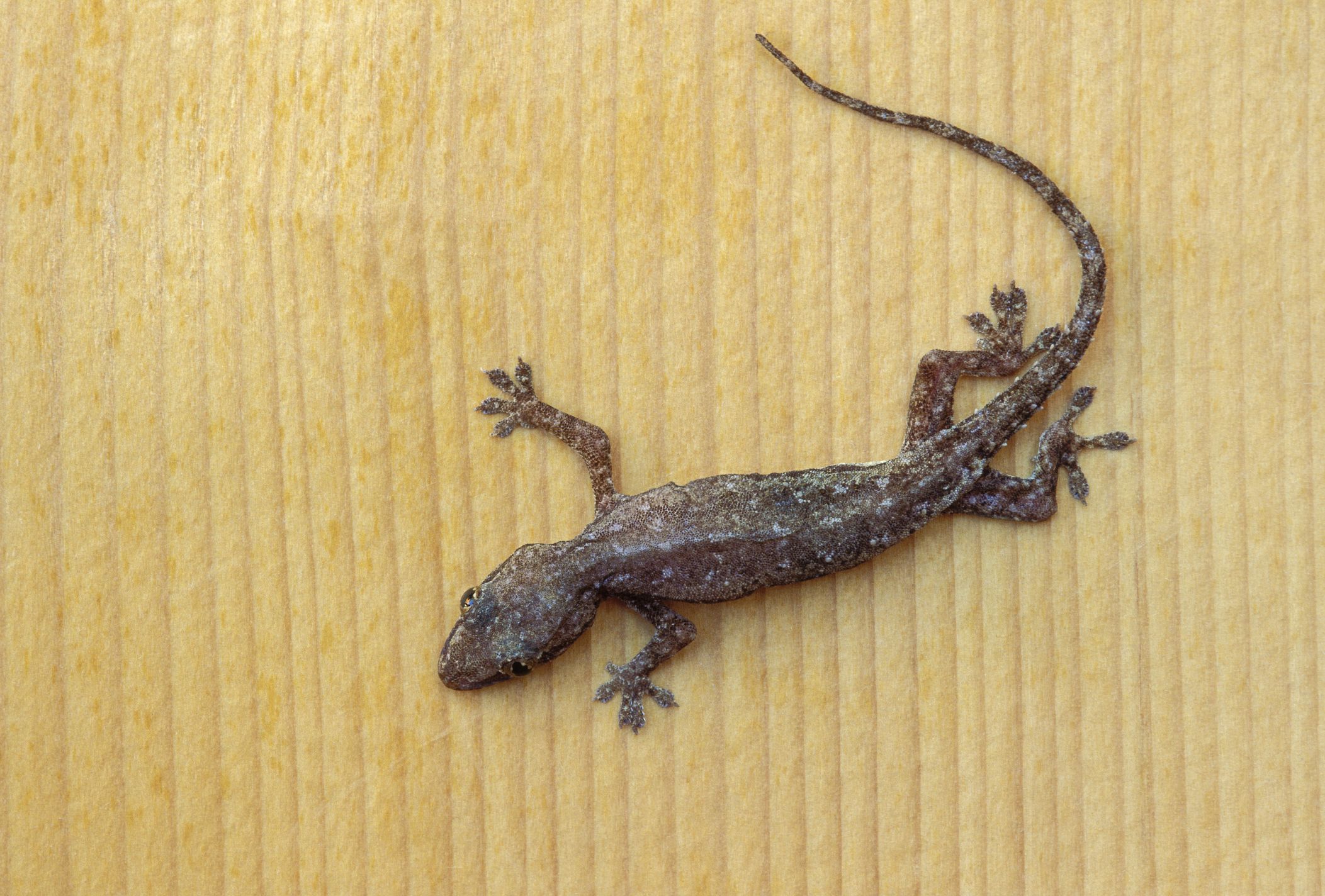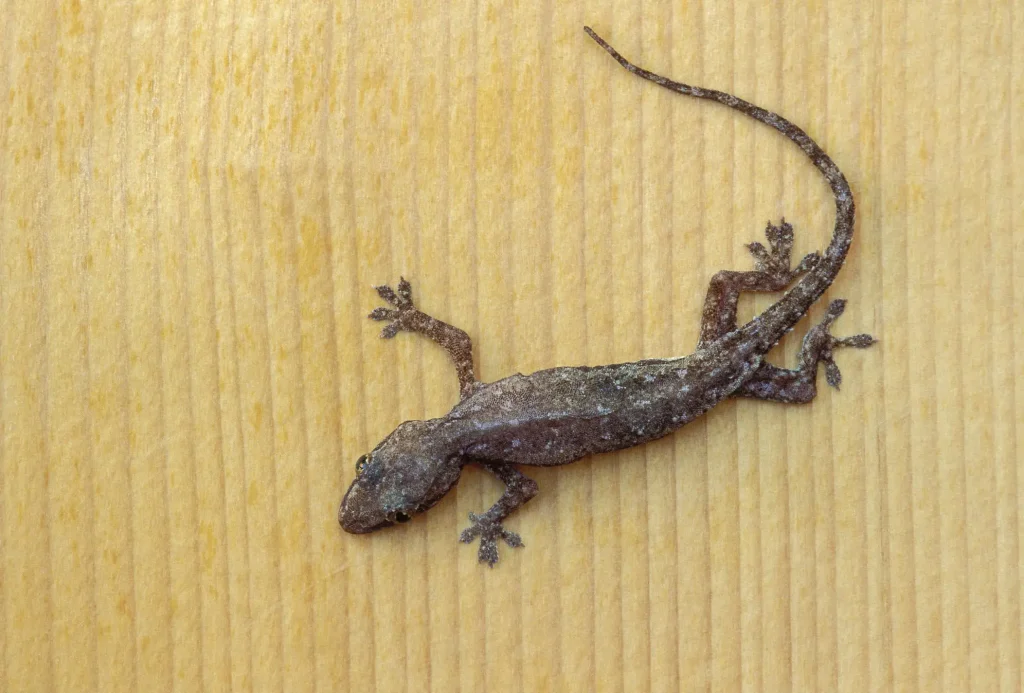Geckos are fascinating creatures that can be found in many parts of the world. They are known for their unique ability to climb walls and ceilings and for their distinctive chirping sounds. But have you ever wondered what these little reptiles eat?
The common house gecko, also known as the Asian house gecko, is a small lizard that can be found in many households. Despite their small size, they have a big appetite and will eat a variety of insects and other small creatures. In this article, we will explore the diet of the common house gecko and provide some interesting insights into their eating habits.
A common house gecko is an insectivore, which means they mainly eat insects. They prefer small insects such as crickets, cockroaches, and small spiders. They may also eat moths, flies, and grasshoppers. Some house geckos have also been known to eat fruit and nectar. It’s important to provide a varied diet for your gecko, and to avoid feeding them insects that are too large or toxic.

What Does a Common House Gecko Eat?
House geckos are fascinating creatures that are commonly found in homes as pets. These small lizards are known for their unique appearance and their ability to climb walls and ceilings with ease. If you are a new pet owner, you may be wondering what to feed your house gecko. In this article, we will explore the diet of a common house gecko and what you should feed them to keep them healthy and happy.
Types of Food for House Geckos
House geckos are known to be insectivores, meaning they primarily eat insects. In the wild, they feed on a variety of insects, including crickets, cockroaches, and moths. As a pet owner, you can replicate their natural diet by feeding them a variety of live insects. Some of the most common insects that you can feed your house gecko include:
1. Crickets
Crickets are a staple food for house geckos. They are a great source of protein and are readily available at pet stores. When feeding your gecko crickets, it is important to ensure that they are gut loaded, which means that they are fed a nutritious diet before being fed to your pet. This ensures that your gecko receives all the necessary nutrients.
2. Mealworms
Mealworms are another popular food for house geckos. They are high in protein and are readily available at pet stores. However, it is important to note that mealworms are high in fat, so they should be fed sparingly.
3. Dubia Roaches
Dubia roaches are an excellent source of protein for house geckos. They are low in fat and are easy to digest. They are also easy to breed, which makes them a cost-effective food option.
Feeding Schedule for House Geckos
When it comes to feeding your house gecko, it is important to establish a feeding schedule. Depending on the age and size of your gecko, you may need to feed them every day or every other day. It is also important to ensure that the insects you feed your gecko are appropriately sized. The insects should be no larger than the width of your gecko’s head.
Benefits of Feeding House Geckos a Balanced Diet
Feeding your house gecko a balanced diet is essential for their health and well-being. A diet that is high in protein and low in fat will help to keep your gecko healthy and active. It will also help to prevent health problems, such as obesity and malnutrition.
Feeding House Geckos Vs. Wild Geckos
Feeding a house gecko is different from feeding a wild gecko. In the wild, geckos have access to a variety of insects and other food sources. However, as a pet owner, it is important to ensure that your gecko receives a balanced diet that meets all their nutritional needs.
Conclusion
In conclusion, house geckos are insectivores that primarily eat live insects. Feeding your gecko a balanced diet that is high in protein and low in fat is essential for their health and well-being. By following a feeding schedule and providing a variety of live insects, you can ensure that your house gecko remains healthy and happy for years to come.
Frequently Asked Questions
Geckos are fascinating creatures that are commonly kept as pets. One of the most important aspects of keeping a gecko healthy is providing it with the proper diet. In this article, we will answer some of the most frequently asked questions about what a common house gecko eats.
What is a common house gecko?
A common house gecko is a small lizard that is native to Southeast Asia. It is also known as the Asian house gecko or the Pacific house gecko. These geckos are commonly found in and around human dwellings, where they hunt for insects and other small prey.
Common house geckos are small, usually only growing to be 3-6 inches in length. They are known for their ability to climb walls and ceilings, thanks to their sticky toe pads. They are also known for their distinctive chirping call, which can often be heard at night.
What do common house geckos eat?
Common house geckos are insectivorous, which means they eat insects. The most common insects that they eat include crickets, mealworms, and waxworms. In the wild, they will also eat other small prey, such as spiders, moths, and beetles.
It is important to provide your common house gecko with a varied diet that includes a mix of different insects. This will help ensure that they are getting all of the nutrients they need to stay healthy.
How often should I feed my common house gecko?
The frequency of feeding will depend on the age and size of your gecko. Generally, adult geckos should be fed every other day, while juveniles should be fed daily. It is important not to overfeed your gecko, as this can lead to obesity and other health problems.
When feeding your gecko, it is important to provide them with the appropriate amount of food. A good rule of thumb is to offer them as many insects as they can eat in 15 minutes.
Can I feed my common house gecko fruits and vegetables?
While some gecko species may eat fruits and vegetables, common house geckos are strictly insectivorous. They do not have the digestive system to process plant matter, so feeding them fruits and vegetables can actually be harmful to their health.
If you want to provide your gecko with additional nutrients, you can try dusting their insects with a calcium supplement or providing them with a vitamin supplement.
What should I do if my common house gecko stops eating?
If your gecko stops eating, it may be a sign of a health problem. Some possible causes of decreased appetite in geckos include stress, illness, or improper temperatures. It is important to consult with a veterinarian who has experience working with reptiles if you notice any changes in your gecko’s behavior or eating habits.
In the meantime, you can try offering your gecko different types of insects or adjusting their enclosure to ensure that they are comfortable and have the proper temperatures and humidity levels.
What do house geckos eat
In conclusion, the common house gecko is a fascinating creature known for its ability to climb walls and ceilings with ease. Although they are commonly found in tropical regions, they can also be found in homes and buildings worldwide. One of the most interesting aspects of their behavior is their diet.
So, what does a common house gecko eat? As we have seen, these creatures are carnivores and feed on a variety of insects, such as roaches, ants, and spiders, as well as small vertebrates like crickets and moths. They are also known to consume their own shed skin.
Interestingly, the diet of a common house gecko seems to vary depending on its habitat. In urban areas, they tend to feed on insects that are commonly found in households, while in rural areas, they may consume larger prey such as grasshoppers and beetles.
Overall, the common house gecko is a fascinating creature that plays an important role in controlling insect populations. Their varied diet and ability to adapt to different environments make them a fascinating subject for study and observation.


